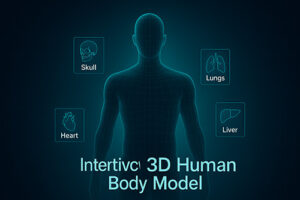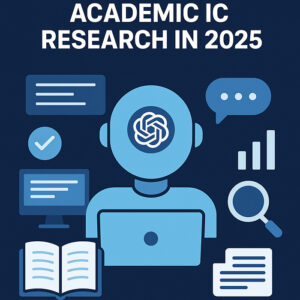Biotechnology & Genetic Engineering: Shaping Tomorrow One Cell at a Time
1. A Quiet Revolution in Plain Sight
Think about the yeast that turns grain into beer or the bacteria that thicken yogurt: for thousands of years, people have practiced biotech without calling it that. Today, we wield far sharper instruments—enzymes that snip DNA like scissors and software that predicts protein folds. The result? A once-in-a-generation leap in our ability to cure disease, feed billions, and even clean up the mess we’ve made of the planet.
2. Clearing Up the Vocabulary
| Term | What It Really Means | Everyday Impact |
|---|---|---|
| Biotechnology | Any use of living systems to make products or solve problems. | Insulin brewed in vats, bioplastics, COVID-19 mRNA shots. |
| Genetic Engineering | The direct rewrite, removal, or insertion of genes. | Corn that shrugs off drought, CAR-T cells that hunt leukemia. |
Bottom line: All genetic engineering is biotechnology, but not all biotech fiddles with genes.
3. Medicine: From One-Size-Fits-Most to Made-For-You
Biopharma’s New Playbook
Recombinant proteins – Lab-grown insulin replaced pig-pancreas insulin in the 1980s; today, dozens of monoclonal antibodies fight everything from arthritis to migraines.
Gene therapy – Treatments such as Luxturna give kids back their night vision, while Zolgensma rescues infants from the fatal spiral of spinal muscular atrophy.
Regenerative tricks – Stem-cell patches mend damaged hearts in clinical trials, and mini-organs (“organoids”) let researchers test drugs on lab-grown livers instead of humans.
Precision Prescriptions
Your genome can now steer therapy choices:
A quick cheek swab helps oncologists match patients with drugs that hit the exact mutation driving a tumor.
Pharmacogenomic panels flag whether a common antidepressant will help or harm you before you swallow the first pill.
4. Farms of the Future
| Goal | Genetic Toolkit | Real-World Payoff |
|---|---|---|
| Bigger harvests | Genes controlling growth hormones | 15–25 % yield bump in test plots |
| Fewer pesticides | Bt toxin gene from soil bacteria | Indian cotton farmers cut spray costs by half |
| More nutritious staples | Golden Rice’s β-carotene pathway | Could curb vitamin-A deficiency in Southeast Asia |
| Climate resilience | Drought-tolerance regulators | Maize that keeps grain weight during heat waves |
Biotech also lends farmers bio-based pest sprays and soil-friendly microbes that replace synthetic fertilizers.
5. Saving the Planet—Cell by Cell
Bioremediation: Oil-gobbling bacteria helped digest crude after the Deepwater Horizon spill.
Biofuels: Algae strains tweaked for faster lipid production are inching toward price parity with diesel.
Biosensors: Fish embryos with fluorescent “alarm genes” now patrol certain European rivers for toxins.
6. The CRISPR Effect & Other Breakthroughs
CRISPR-Cas9 made editing cheap and precise; base and prime editors go further, swapping single DNA letters without breaking both strands. Meanwhile, synthetic-biology teams assemble designer pathways that turn yeast into factories for antimalarial drugs and biodegradable plastics.
7. Pushback & Guardrails
Food fights: Opponents worry about allergenicity, gene flow to wild crops, or corporate control of seeds.
Germline red line: The 2018 birth of CRISPR-edited twins in China triggered a worldwide moratorium on heritable edits.
Equity questions: Advanced therapies can run into seven-figure price tags—who foots the bill?
Most nations now enforce step-by-step risk assessments, long-term monitoring, and public comment periods before new biotech hits shelves.
8. Coming Attractions
Optogenetics: Doctors may treat Parkinson’s by wiring neurons to respond to light pulses.
3-D bioprinting: Prototype printers already build cartilage; whole organs are the moonshot.
AI + wet labs: Machine-learning models design enzymes in silico, then robotic benches test them overnight—shrinking R&D timelines from years to months.
Wild ideas on the horizon include editing pig genomes for transplant-ready hearts and engineering microbes to terraform Martian soil.
9. Stories from the Field
| Challenge | Biotech Fix | Snapshot Outcome |
|---|---|---|
| Childhood leukemia | CD19 CAR-T cell therapy | ~85 % complete remission in patients who’d run out of options |
| Inherited blindness | One-time AAV gene delivery | Patients navigate dim rooms, recognize faces, see stars |
| Plastic waste | Bacteria modified to secrete PHA biopolymer | Forks and films that decompose in backyard compost |
10. Frequently Asked (and Actually Answered)
How exact is gene editing today?
With current CRISPR variants, off-target hits drop below a few percent. Labs sequence the whole genome post-edit to double-check.
Do GM foods pose health risks?
Every major science body that’s reviewed the evidence—WHO, NAS, EFSA—says approved crops are as safe to eat as conventional ones.
Will CRISPR cure complex diseases like diabetes?
Monogenic disorders are simplest; multifactor diseases will likely need combo approaches (lifestyle, small molecules, maybe partial gene edits).
11. Navigating the Road Ahead
Biotechnology’s pace shows no sign of slowing. Yet technological horsepower alone can’t guarantee fair or wise outcomes. Citizens, not just scientists, will decide where the lines get drawn.
Want to stay involved?
Subscribe to Nature Biotechnology or the NIH’s Genetics Home Reference for plain-language updates.
Attend local public-comment sessions when regulators evaluate new GM proposals.
Support nonprofits that offer genetic-counseling scholarships, ensuring breakthroughs reach underserved communities.









